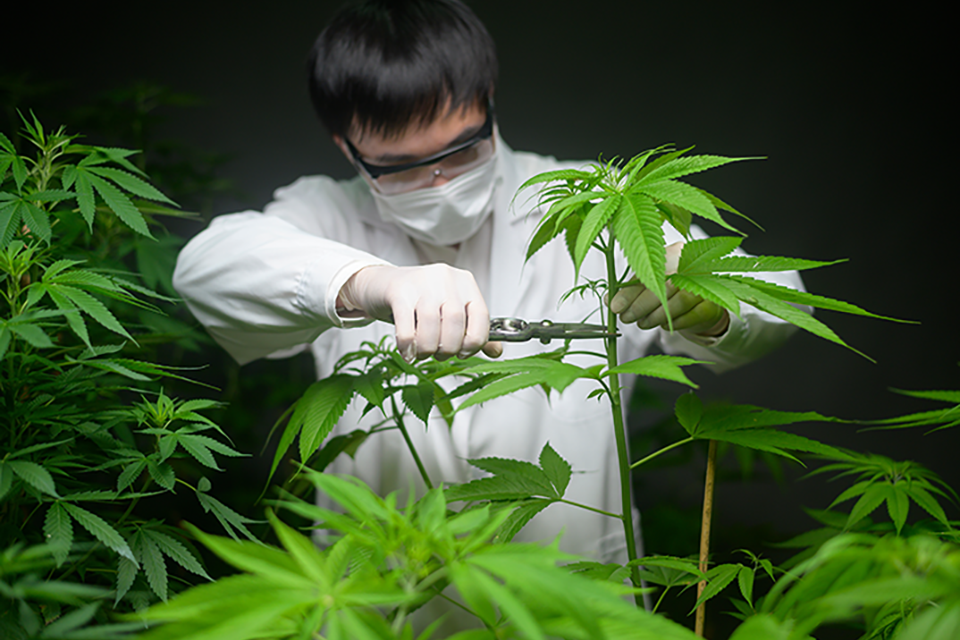
Propagating cannabis from cuttings is a popular method among home growers in the USA. This step-by-step guide will provide you with all the information you need to propagate cannabis plants from cuttings successfully. From understanding the different types of cuttings to caring for your propagated plants, you’ll be a master grower in no time.
What Are Cannabis Cuttings?
Cannabis cuttings are pieces of cannabis plants that have been trimmed off of the main plant. There are different types of cuttings, and not all are suitable for propagation. Learning how to select the right cannabis plant for cuttings is essential for growing healthy and thriving cannabis.
Types of Cuttings Suitable for Propagation
There are two primary types of cuttings you can use when propagating cannabis: apical cuttings and node cuttings.
- Apical Cuttings: These are cuttings taken from the apex or top of the cannabis plant. They usually have a high growth rate due to the concentration of the growth hormone, auxin, at the plant’s tip. Their fast growth makes them a preferred choice for growers looking for speedy results.
- Node Cuttings: These cuttings are derived from the nodes, which are the parts of a plant stem from which leaves or branches grow. Node cuttings are also referred to as lateral cuttings. While they might grow slower than apical cuttings, node cuttings often provide a higher yield due to their tendency to grow into bushier plants.
Selecting the Right Cannabis Plant for Cuttings
Choosing the right plant to take cuttings from is as important as the cutting process itself. Select a mother plant that is healthy, strong, and has demonstrated exceptional growth and yield for effective propagation. The genetic qualities of the mother plant will be passed on to the propagated plants, so choose a plant with traits you’d like to reproduce. Be sure that the plant is pest-free and in the vegetative stage. Taking cuttings from flowering plants is not recommended as it could lead to less vigorous clones.
Preparing for Propagation
Successfully propagating cannabis cuttings requires more than just the right plant and cuttings. For the best chance of growing a healthy plant, you’ll need to do a few things to prepare.
Gathering Necessary Materials and Tools
Start by gathering the necessary materials and tools for the process. You’ll need a sharp knife or scissors to take the cuttings, rooting hormone to stimulate root growth, a growing medium—such as rockwool cubes or soil—and containers to house your cuttings. Keep in mind that the containers should have good drainage to prevent waterlogging.
Creating an Ideal Environment for Successful Propagation
Ensure the environment for your plants is conducive to their growth. This means maintaining an optimum temperature range of 72–77 degrees Fahrenheit and relative humidity of 70% to 90%.
Propagation Process: Step-by-Step Guide
Now that you have prepared your environment and materials, it’s time to start the propagation process.
Taking Cuttings From the Mother Plant
Cut a 3-5 inch piece off the mother plant, ideally making a cut below the node. Avoid tearing the plant tissue as this could create a gateway for pathogens.
Preparing the Cuttings for Planting
Trim the lower leaves of your cutting and dip the cut end into your rooting hormone. This will prompt root formation and increase the chances of successful propagation.
Planting the Cuttings and Providing Care
Place your treated cuttings into your chosen growing medium within the containers. Water the cuttings well and keep them in a warm, humid environment.
Rooting and Transplanting
Monitor your cuttings closely after they’ve been planted, maintaining a warm, humid environment. Within a week or two, the cuttings should start to develop roots. Once the cuttings have established a strong root system, they can be transplanted into larger containers. Continue to monitor the plants closely, ensuring they are getting adequate water and nutrients.
Caring for Propagated Cannabis Plants
Once you’ve effectively propagated your cannabis plants, it becomes essential to provide them with appropriate care. Keep your plants under suitable light conditions, with adequate intervals of darkness. Water your plants consistently but avoid overwatering. Check your plants frequently for pests, diseases, and signs of nutrient deficiency. These practices are vital for promoting robust growth and overall health.
Legal Considerations for Home Growers in the USA
Home cultivation of cannabis in the USA is subject to a variety of legal considerations, which vary significantly from state to state. While some states have legalized recreational and/or medical cannabis use, others maintain strict prohibitions.
Before embarking on home cultivation, individuals must thoroughly understand the laws applicable in their state. This includes limits on the number of plants you can grow and where you can grow them. In some cases, you may even need a license. Home growers must carefully research and adhere to all relevant laws and regulations to avoid legal repercussions.
Common Problems for Propagating Cannabis From Cuttings
When propagating cannabis from cuttings, several common problems may arise, potentially hindering successful growth and development.
Overwatering and Underwatering
Both these scenarios can seriously hamper the growth of cuttings. Overwatering can suffocate roots and lead to diseases while underwatering can stunt growth.
Not Sterilizing Tools
Fungi and bacteria can easily spread through tools used in cutting and propagation. Always sterilize your tools before use to prevent introducing pathogens to your new plants.
Poor Lighting Conditions
Cannabis cuttings need adequate light for photosynthesis, but too much light can also be harmful. Understanding and adjusting lighting conditions for the needs of your plants is necessary.
Wrong Timing
It’s best to cut in the early morning when plants have the most moisture. Cutting at the wrong time might affect the cloning process.
Get Ready for Growing
Propagating cannabis from cuttings is a rewarding process, especially with the right information and patience. As long as you remember the tips and techniques we’ve covered here, you should be able to find success in your growth.



